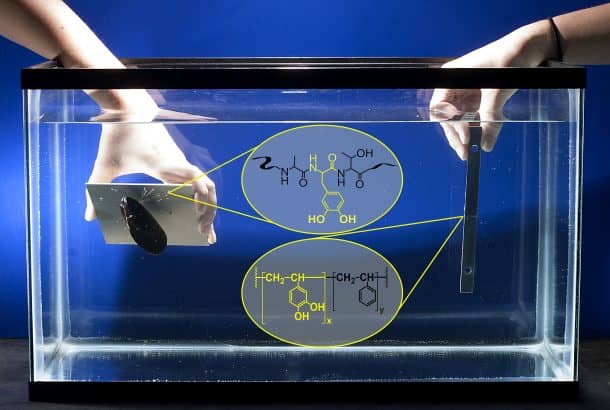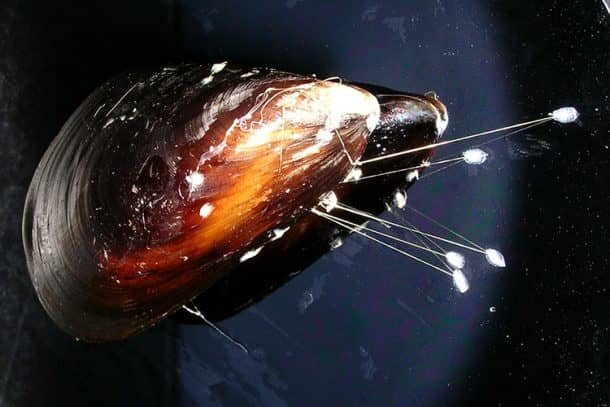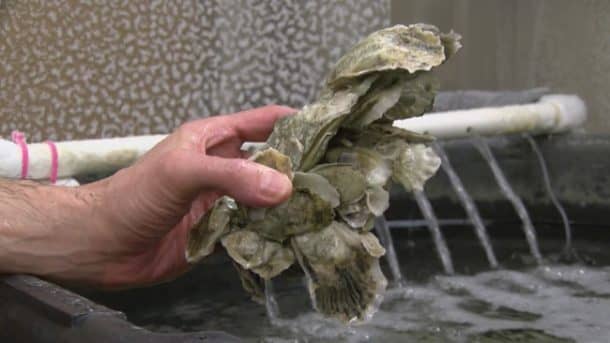The future of technology is dependent on the development of new materials more than anything else. Materials like 3D graphene or ultralight steel-strong plastics keep coming up. In the future of materials and tech, glues are also really important. The world is in need of an ideal adhesive that does not wear out in any environment. A team of engineers at the Purdue University were able to do just that with a nature-mimicking underwater glue.

Source: Purdue University
Shellfish create a substance that glues them in place save themselves from predators or resist movement when the waters are strong. The team studied the behavior of the shellfish, from which Jonathan Wilker, professor of chemistry and materials engineering at Purdue concluded that our wet bonding problems were solved by nature “eons ago.” The professor said, “Mussels, barnacles, and oysters attach to rocks with apparent ease. In order to develop new materials able to bind within harsh environments, we made a biomimetic polymer that is modeled after the adhesive proteins of mussels.”

To latch onto surfaces, Mussels use hair like fibers. The adhesive that these mussels use contains an amino acid called DOPA which allows for a stronger grip. The amino acid is naturally produced and cannot be replicated but the compounds in DOPA responsible for adhesion, called catechols were reconfigured into synthetic polymers.

The adhesive thus created was successfully tested like 17 times stronger than the mussels’ natural glue. This was surprising, as in most cases science can only manage to get close to nature and almost never surpasses it, as Wilker said, “In biomimetics, where you try to make synthetic versions of natural materials and compounds, you almost never can achieve performance as good as the natural system.”
It does not mean nature’s glue is not perfect; it is just as mussels need it to be. They need to move from time to time, and if the glue were too strong, they would be stuck in one place forever.
The first samples of the underwater glue were created in the lab, and we do not know yet how well it will perform in real-world scenarios. If further research on the adhesive material is effective, manufacturing techniques as we know today will change a lot. The glue would be particularly useful in underwater explorations where holes may appear in vehicles that need to be patched.
The research was published in ACS Applied Materials and Interfaces.


